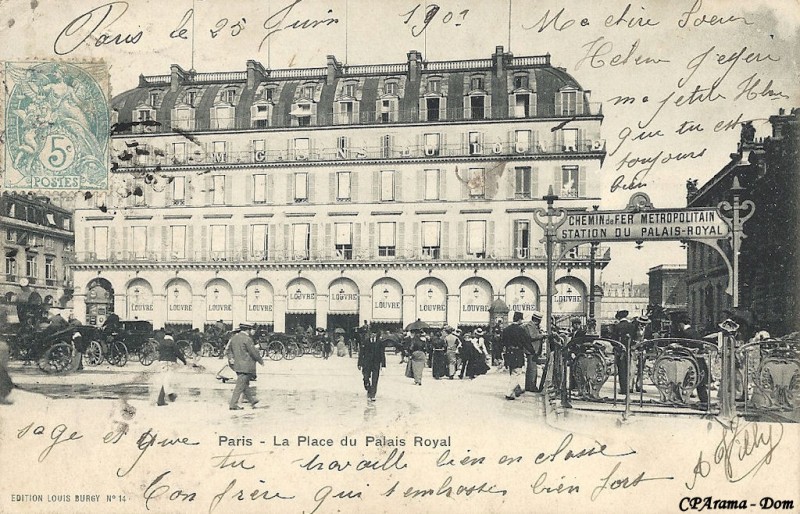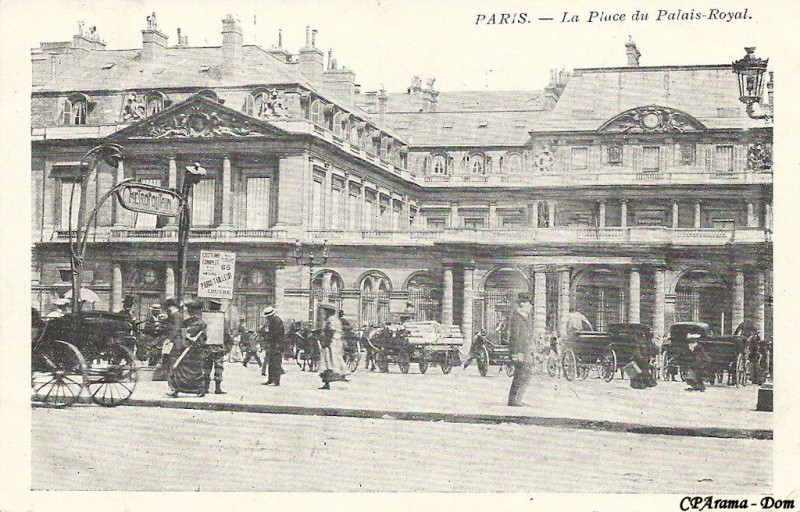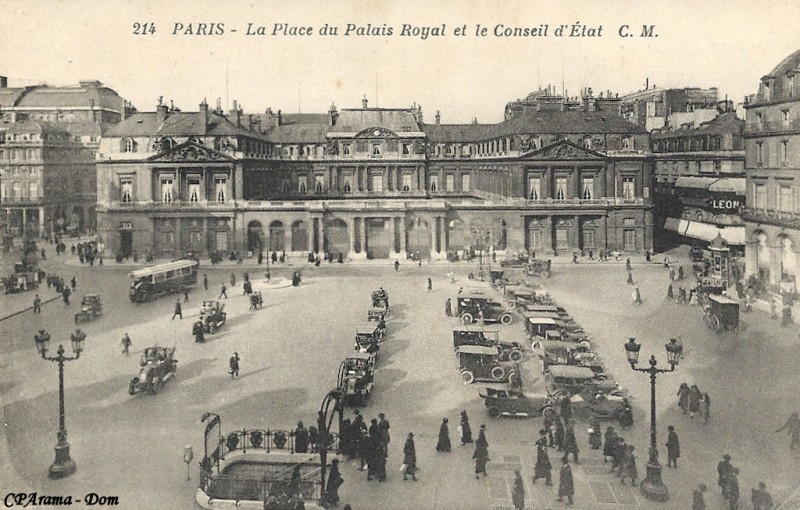
À l’origine, le Palais Royal se trouvait à l’emplacement de l’hôtel de Rambouillet. Racheté en 1624 par le Cardinal Richelieu, celui ci y entreprendra un certain nombre de modifications. A sa mort, il le léguera à Anne d’Autriche qui l’offrira à son tour à son fils, le futur roi Louis XIV.
Ce dernier donnera le Palais Royal en apanage à son frère Philippe d’Orléans en 1692. Mais c’est à la mort du monarque que l’endroit connaîtra son âge d’or. Le régent Louis Philippe d’Orléans s’y installe. S’ouvre alors une période mondaine faite de bals et de fêtes officielles.
A la mort du régent, le Palais Royal tombera dans l’oubli jusqu’en 1780, année où le Duc de Chartres (futur Philippe Egalité) entreprendra des travaux qui lui donneront sa structure actuelle.
Durant la révolution de 1848, le Palais sera complètement saccagé par les insurgés. En Mai 1871, il manque d’être incendié par les communards, mais au final seule l’aile droite sera réellement endommagée. En 1959, le conseil constitutionnel et le ministère de la culture s’y installent. En 1985, Buren créera la polémique avec ses fameuses colonnes “Les deux plateaux” créés sur un ancien parking.
Au début des années 2000, un plan de restauration du palais royal est entamé, il est actuellement en cours.
.
The Palais Royal was built on the site of the former Hotel de Rambouillet. In 1624, it was acquired by Cardinal Richelieu, who subjected it to a significant number of architectural modifications. On Richelieu’s death, it was bequeathed to Anne of Austria, who subsequently passed it to her son, King Louis XIV of France; Louis, in turn granted it to his brother Philippe d’Orleans in 1692. It was the death of the monarch, however, that ushered in the golden age of the palace: this is when the prince regent, Louis Philippe d’Orléans held magnificent court in these buildings, hosting a series of balls and official celebrations. When the regent himself died, the palace was largely forgotten about until the Duc de Chartes (the future ‘Philippe Égalité’) enhanced the structure in 1780, giving it its current form. The palace was sacked by insurgents during the 1848 Revolution, while less than 30 years later, in 1871, it narrowly escaped being burned by the leaders of the Paris Commune – only the eastern colonnades suffered significant damage. Since 1959, the building has housed the Ministry of Culture. In 1985 its southern courtyard, then used as a parking lot, was controversially transformed into an art installation known as ‘Les Deux Plateaux’, composed of a series of striped columns. A grand restoration of the palace was drawn up in 2000, of which work is still in progress. (trad: Tim Mc Inerney)








Merci à Gregor Bonnell, pour ses recherches et sa contribution au texte


